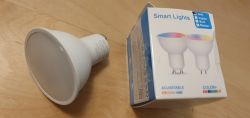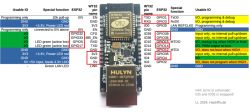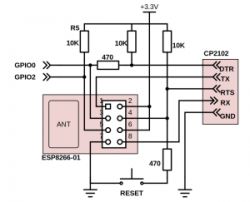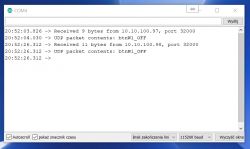Dear colleagues, I am grateful for your help and patience.
But somehow it doesn't occur to me that I need to paste so much code into the AP UDP module.
I use AT commands to set up:
- AP operating mode
- UDP transmission
- IP no.
- listening port number
- data transfer rate on RS232
and that everything arriving at the module is sent to RS232.
On the other hand, programming the module via Arduino adds so many additional things.
Added after 18 [minutes]: .
what I mean is whether this set IP address is the address of the module working as a station or is it the address of the module when it works as a UDP server.
But somehow it doesn't occur to me that I need to paste so much code into the AP UDP module.
I use AT commands to set up:
- AP operating mode
- UDP transmission
- IP no.
- listening port number
- data transfer rate on RS232
and that everything arriving at the module is sent to RS232.
On the other hand, programming the module via Arduino adds so many additional things.
Added after 18 [minutes]: .
what I mean is whether this set IP address is the address of the module working as a station or is it the address of the module when it works as a UDP server.








